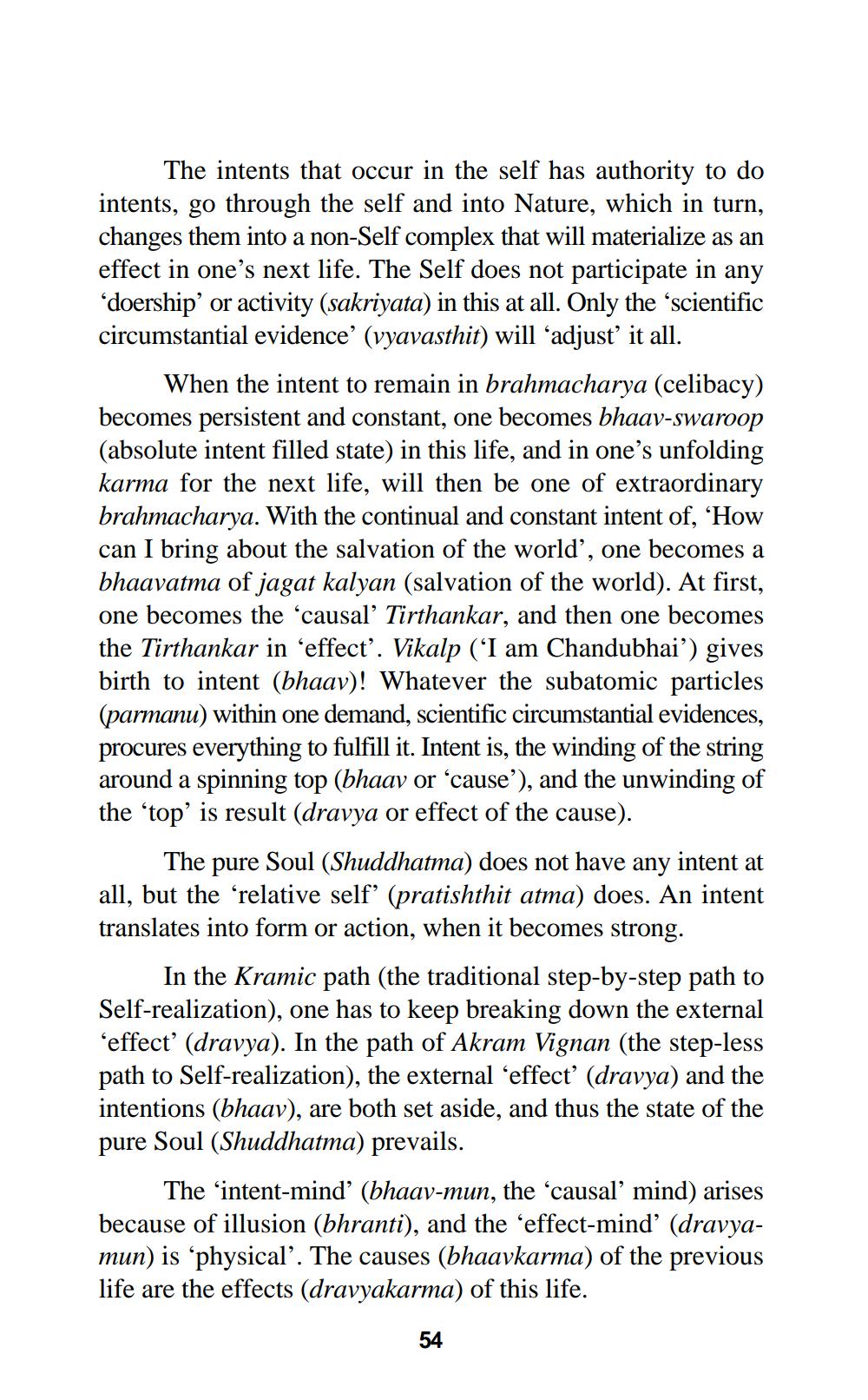________________
The intents that occur in the self has authority to do intents, go through the self and into Nature, which in turn, changes them into a non-Self complex that will materialize as an effect in one's next life. The Self does not participate in any ‘doership’ or activity (sakriyata) in this at all. Only the 'scientific circumstantial evidence' (vyavasthit) will ‘adjust it all.
When the intent to remain in brahmacharya (celibacy) becomes persistent and constant, one becomes bhaav-swaroop (absolute intent filled state) in this life, and in one's unfolding karma for the next life, will then be one of extraordinary brahmacharya. With the continual and constant intent of, 'How can I bring about the salvation of the world', one becomes a bhaavatma of jagat kalyan (salvation of the world). At first, one becomes the 'causal' Tirthankar, and then one becomes the Tirthankar in 'effect. Vikalp ('I am Chandubhai') gives birth to intent (bhaav)! Whatever the subatomic particles (parmanu) within one demand, scientific circumstantial evidences, procures everything to fulfill it. Intent is, the winding of the string around a spinning top (bhaav or 'cause'), and the unwinding of the 'top' is result (dravya or effect of the cause).
The pure Soul (Shuddhatma) does not have any intent at all, but the “relative self' (pratishthit atma) does. An intent translates into form or action, when it becomes strong.
In the Kramic path (the traditional step-by-step path to Self-realization), one has to keep breaking down the external ‘effect' (dravya). In the path of Akram Vignan (the step-less path to Self-realization), the external “effect' (dravya) and the intentions (bhaav), are both set aside, and thus the state of the pure Soul (Shuddhatma) prevails.
The 'intent-mind' (bhaav-mun, the 'causal' mind) arises because of illusion (bhranti), and the effect-mind' (dravyamun) is ‘physical'. The causes (bhaavkarma) of the previous life are the effects (dravyakarma) of this life.
54




